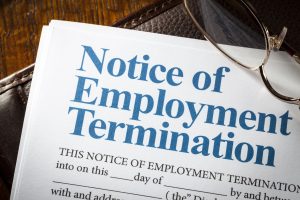 There is a common misconception that the first £30,000 of termination payments are tax free. From April 2018 the rules are changing, and yet again a misconception may come to dominate – that the £30,000 exemption has been abolished. As this article will reveal neither is true, but from 6 April 2018 its availability will be severely restricted. This is to the detriment of both employees being made redundant and employers who need to let staff go.
There is a common misconception that the first £30,000 of termination payments are tax free. From April 2018 the rules are changing, and yet again a misconception may come to dominate – that the £30,000 exemption has been abolished. As this article will reveal neither is true, but from 6 April 2018 its availability will be severely restricted. This is to the detriment of both employees being made redundant and employers who need to let staff go.
Parting company
If an employee works in a sensitive area of a business, or there are concerns that they may try and take clients with them, an employer may not want them to work out their notice period. This can be achieved by continuing the employment and paying them their salary (gardening leave), or by paying them in lieu of their notice period (PILON).
As it is the continuing payment of salary, unsurprisingly gardening leave is taxed. However, the situation with PILONs is much less clear. There is a common misconception that the first £30,000 of termination payments are always tax free, but technically this doesn’t include PILONs.
The current rules
Like gardening leave, PILONs are fully taxable. But there is a loophole: if an employment contract doesn’t specifically state that a payment could be made instead of giving a notice period, then it can be argued that the payment is for breach of contract. The first £30,000 is then free of tax. This is valuable to employers, who also save NIC at 13.8% on the full amount.
Naturally the response of many employers has been to strip PILONs from contracts. However, this has led to a farcical situation where one employee faces a hefty tax bill because of a few words in their contract, whilst another employee enjoys £30,000 of tax free cash.
This loophole was partly closed by deeming that if a PILON is expected then it should be read into the contract of employment. Therefore it can’t be a breach of contract and the £30,000 exemption doesn’t apply. However, when a series of terminations is made the first employee out of the door might pay no tax on their first £30,000, but the third or fourth employee might find their PILON being taxed because an expectation that they will receive one has been created.
PILONs are out, “post-employment notice pay” is in
The Government has responded to this with new rules which sidestep the argument about whether a payment is for breach of contract or a PILON. This may lead to a misconception that the £30,000 exemption is being abolished. This is not true, but it will no longer apply as widely, meaning many employees will pay more tax and their employers will pay more NIC.
From 6 April 2018, when a payment is made but notice is not served, the employer must calculate the pay the employee would have received in their notice period had they carried on in employment. This “post-employment notice pay” is excluded from the £30,000 exemption.
How it works
In a nutshell, the “basic pay” in the employee’s final pay period is extrapolated over their notice period to give a notional “post-employment notice pay”. This amount cannot qualify for the £30,000 exemption. If the termination payment exceeds the post-employment notice pay, the excess may qualify for the exemption. Whilst this sounds simple in theory, in practice it is a potentially complex calculation.
“Basic pay” – potential trap or planning opportunity?
Confusingly, “basic pay” goes far beyond what would normally be considered basic pay, and includes benefits, bonuses, overtime and commission. Worse still, it also includes payments made in connection with the termination, and amounts treated as employment income in relation to shares and options. This creates a potential trap, but also a planning opportunity. By moving bonuses into the penultimate pay period and delaying payments related to the termination until after notice is given, the basic pay could be reduced thereby increasing the proportion of the termination payment which is tax free.
Into the fire
The uncertainty surrounding the treatment of PILONs has gone, only to be replaced with confusing new concepts and convoluted calculations. From 6 April 2018 the costs to both employees and employers will rise in the majority of cases, with traps for the unwary and poorly advised. If unfortunately it becomes necessary to part company with an employee, doing it sooner rather than later could be to the benefit of both parties.
The information in this article was correct at the date it was first published.
However it is of a generic nature and cannot constitute advice. Specific advice should be sought before any action taken.
If you would like to discuss how this applies to you, we would be delighted to talk to you. Please make contact with the author on the details shown below.









